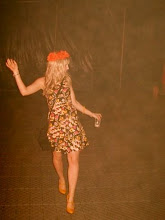On the 18th October I was taught how to make hardback books. I really enjoyed the process, and found it very rewarding, especially as you finish up with a very professional looking book which you, yourself, created.
Below is the process we all followed to create the books. There was a large amount of information to take in during the lesson so as we went along I recorded brief notes that I could later refer back to.
1. Fold each individual section down the centre crease with the bonefolder.
2. Mark an inch inwards along the new seam from the edges of the section.
3. Place the tapes evenly between the two marks you have just created and mark each side of them.
4. Use a ruler to replicate these lines onto all the other sections.
5. With a craft knife cut the ruler marks. Make sure you go the whole way through each section.
6. Next, using masking tape, attach the two pieces of tape to the edge of your work area.
7. Place the bottom section of the book on the work surface so it measures up with the two pieces of tape now stuck to the side.
8. Thread the needle, making sure you double it up.
9. Make sure you leave plenty of tail at the beginning of the sewing.
10. Weave your way through each hole you created using the craft knife. (Make sure you sew around the two pieces of tape). Once, you reach the end, lay the next section of book on top and then weave through each hole of the next section.
11. Then double knot the thread to the tail you left at the beginning. When tying any knot make sure you pull he needle and thread upwards and away.
12. You then add the 3rd layer of section and, like before, sew through the holes.
13. However, once you get to the end this time you must tie a kettle knot.
14. Keep repeating this process until all the sections are tied together.
15. Place in a vice or under some heavy weights. This helps it flatten down.
16. Fill in the seam of the book with PVA glue.
17. Add two more coats of PVA, making sure each coat is dry before adding the next.
18. Next appeal a strip of binding fabric onto the seam of the book, use PVA as the adhesive.
19. You can now cut the ends of the two pieces of tape off.
20. Trim your selected coloured card to roughly the size of the book and glue to the front and back pages.
21. Once dry, trim the edges of the book to create crisp, clean lines.
22. Cut out two rectangles of cardboard, normally 3mm bigger than your book.
23. Also measure the spine of the book.
24. Get some special fabric, roughly A2 size. Lay this face down, place the rectangles and spine piece on the fabric and draw around.
25. Cut a 45 degree angle on each corner, making sure you doing go too close to the actual corner.
26. Using very little PVA, glue the cardoard and spine onto the fabric, making sure there are no bubbles.
27. Fold the corners of the fabric over the cardboard to create a crisp edge.
28. Stick the coloured paper to the cover starting with the front and then moving the book so that you can stick down the back cover.
OUGD203 DESIGN PRACTICE 2 - evaluation
15 years ago








